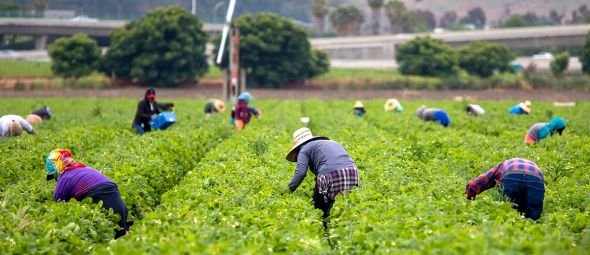Overview
Immigrant workers significantly contribute to the US economy but are often concentrated in low-wage jobs and face legal and accreditation barriers to fully utilizing their skills and education. Data and research on immigrant workers can inform efforts to strengthen overall US labor conditions, help expand access to employment opportunities for these workers, and improve alignment between the workforce needs of the US economy and immigrants’ skillsets. Equally important is understanding employers’ key role in creating inclusive workplaces that maximize immigrant workers’ potential within the US labor market.
Featured Content

Worker voice, representation, and power, Immigrant workers, Sectoral bargaining
December 12, 2023
Video
WorkRise Shorts: Economic Security for Low-Wage Immigrant Manicurists with Lisa Fu
California Healthy Nail Salon Collaborative executive director Lisa Fu discusses her WorkRise-funded research that examines two specific approaches to elevate the industry—high-road training partnerships and sectoral bargaining—and offers insight into how unions, community partners, workers, and owners can use these strategies to move forward.
December 12, 2023

Employer practices, Immigrant workers
August 16, 2023
Research Summary
Agricultural Worker Shortage to Worsen without Wage Increases
Research finds that workers from Mexico are leaving farm work and are less inclined to participate in US agricultural work unless inflation-adjusted wages rise significantly, which in turn creates incentives for US farm employers to increase wages while seeking labor-saving technological solutions.
August 16, 2023

Worker voice, representation, and power, Immigrant workers
March 03, 2021
Changemaker Q&A
Supporting a Workforce That Makes All Other Work Possible: A Q&A with Palak Shah
National Domestic Workers Alliance's social innovation director shares key insights on the domestic care workforce and the solutions we need to support them.
March 03, 2021
Latest Content
Social determinants of work, Immigrant workers
Last updated on January 10, 2023
Curated Research
Expanding Inclusion in the Social Safety Net: Impacts of New York’s Excluded Workers Fund
This Urban Institute report analyses the effect of New York’s Excluded Workers Fund (EWF), a $2.1 billion program that allowed 130,000 immigrants without work authorization to receive unemployment compensation if they lost work during the COVID-19 pandemic recession.
Last updated on January 10, 2023
Worker voice, representation, and power, Immigrant workers, Sectoral bargaining
Report
July 28, 2022
Worker Power and Economic Mobility: A Landscape Report
This landscape report summarizes empirical evidence on two main pathways for workers to exercise their power in the labor market: the ability to exit their current job for better outside options and organizations and institutions that build worker voice within firms.
WorkRise Research

Worker voice, representation, and power, Scheduling, Immigrant workers
July 25, 2022
Article
Defining Job Vulnerability Using an Equity Lens
A deeper understanding of work through a vulnerability framework can help shape policies and practices to mitigate harms and strengthen supports for workers, regardless of their employment status.

Worker voice, representation, and power, Immigrant workers
March 03, 2021
Changemaker Q&A
Supporting a Workforce That Makes All Other Work Possible: A Q&A with Palak Shah
National Domestic Workers Alliance's social innovation director shares key insights on the domestic care workforce and the solutions we need to support them.
Economic context, Immigrant workers
Last updated on May 06, 2020
Curated Research
Hispanic Adults in Families with Noncitizens Disproportionately Feel the Economic Fallout From COVID-19
This Urban Institute brief focuses on the impact of the COVID-19 pandemic on family employment, financial security, and material hardship among nonelderly Hispanic adults, drawing on data from March and April 2020.
Last updated on May 06, 2020